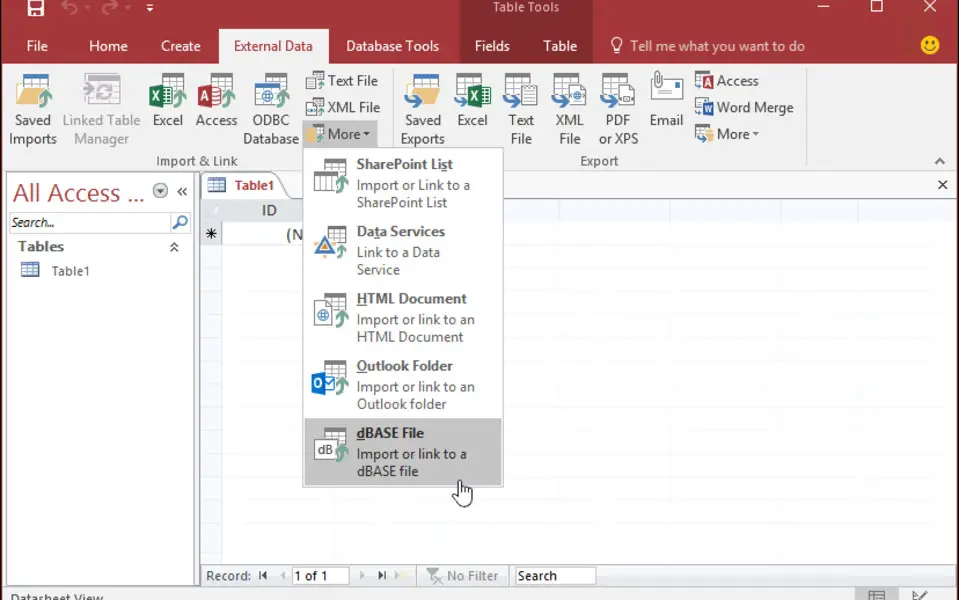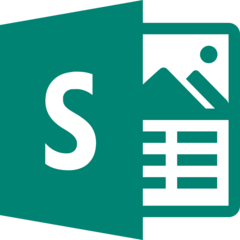|
|
Extend a selection to adjacent rows in Datasheet view |
||
|
|
Select the menu to the left or right; or, when a submenu is visible, switch between the main menu and the submenu |
||
|
|
Move among the property sheet tabs with a tab selected, but no property selected |
||
|
|
Move one character to the left or right |
||
|
|
Extend a selection to adjacent fields in the same row in Datasheet view |
||
|
|
Open the selected drop-down list box |
||
|
|
Open a combo box |
||
|
|
Switch to the next or previous tab in a dialog box |
||
|
|
Toggle backward between tabs when a property is selected |
||
|
|
Exit the subdatasheet and move to the last field of the previous record in the datasheet |
||
|
|
Exit the subform and move to the previous field in the main form or previous record |
||
|
|
Delete all characters to the right of the insertion point |
||
|
|
Toggle forward between views when in a table, query, form, or report |
||
|
|
Move right one screen |
||
|
|
Move to the current field in the next record |
||
|
|
Move left one screen |
||
|
|
Move to the current field in the previous record |
||
|
|
Toggle backward between views when in a table, query, form, or report |
||
|
|
Display the shortcut menu for the selected item |
||
|
|
Display a shortcut menu for a selected item such as a folder or file |
||
|
|
Open a shortcut menu or open a drop-down menu for the selected gallery item |
||
|
|
Change the selection by one word to the right |
||
|
|
Change the size of the selection by one word to the right |
||
|
|
Complete the wizard |
||
|
|
Change the selection by one word to the left |
||
|
|
Change the size of the selection by one word to the left |
||
|
|
Switch between selecting the current record and the first field of the current record, in Navigation mode |
||
|
|
Switch to the next or previous pane in the workspace |
||
|
|
Switch to the next or previous database window |
||
|
|
Open the Zoom box to conveniently enter expressions and other text in small input areas |
||
|
|
Collapse the subdatasheet |
||
|
|
Open the External Data tab |
||
|
|
Move to the next page of the wizard |
||
|
|
Move from the datasheet to the record's subdatasheet |
||
|
|
Invoke a Builder |
||
|
|
Open the Look in list |
||
|
|
Find the next occurrence of the text specified in the Find and Replace dialog box when the dialog box is closed (Datasheet view and Form view only) |
||
|
|
Repeat the last Find action |
||
|
|
Select from the insertion point to the end of the text entry |
||
|
|
Select from the insertion point to the beginning of the text entry |
||
|
|
When you have a code module open, switch from the Visual Basic Editor to form or report Design view |
||
|
|
Switch from a control's property sheet in form or report Design view to the design surface without changing the control focus |
||
|
|
and then enter the search term to open the Tell me box on the ribbon |
||
|
|
Undo the previous extension |
||
|
|
Requery the underlying tables; in a subform, this requeries the underlying table only for the subform |
||
|
|
Save a database object |
||
|
|
Move to the previous page of the wizard |
||
|
|
Turn on Resize mode for the active window when it is not maximized (press the arrow keys to resize the window, and then, to apply the new size, press Enter) |
||
|
|
Open an existing database |
||
|
|
Go back to Access Help Home |
||
|
|
Maximize or restore a selected window |
||
|
|
Invoke the Field List pane in a form, or report (if the Field List pane is already open, the focus moves to the Field List pane) |
||
|
|
Show or hide the Field List pane |
||
|
|
Undo typing |
||
|
|
Move between groups on a ribbon |
||
|
|
Show the program icon menu (on the program title bar), also known as the control menu |
||
|
|
Go to a specific record in a subdatasheet |
||
|
|
Move to the page number box |
||
|
|
Copy a screenshot of the entire screen to the Clipboard |
||
Advertisement |
|||
|
|
Insert the current date |
||
|
|
Open the Database Tools tab |
||
|
|
Insert the value from the same field in the previous record |
||
|
|
Switch between the Visual Basic Editor and the previous active window |
||
|
|
Switch from the Visual Basic Editor back to form or report Design view |
||
|
|
Switch to the next or previous database window |
||
|
|
Insert the default value for a field |
||
|
|
Copy a screenshot of the current window to the Clipboard |
||
|
|
Select the option, or select or clear the check box by the letter underlined in the option name |
||
|
|
Insert the current time |
||
|
|
B Open the Fields tab |
||
|
|
T Open the Table tab |
||
|
|
2 Open the Add-ins tab, if present |
||
|
|
ht Turn on Move mode |
||
|
|
er Open the list of choices and change the connection state |
||
|
|
Open the Save As dialog box |
||
|
|
Move to the next or previous field in a Datasheet view |
||
|
|
Open the Page Setup dialog box (for forms and reports) |
||
|
|
Open the Help window |
||
|
|
Zoom in or out on a part of the page |
||
|
|
Switch to Form view from form Design view |
||
|
|
Go to a specific record in a Datasheet view |
||
|
|
Switch between Edit mode (with insertion point displayed) and Navigation mode in a datasheet or design view |
||
|
|
Open the Find tab in the Find and Replace dialog box in the Datasheet view or Form view |
||
|
|
Open an existing database |
||
|
|
Open the Print dialog box from Print (for datasheets, forms, and reports) |
||
|
|
Show or hide a property sheet |
||
|
|
Move the focus to a different pane of the window |
||
|
|
Show or hide the Navigation Pane |
||
|
|
|
||
|
|
Open the Replace tab in the Find and Replace dialog box in the Datasheet view or Form view |
||
|
|
Move to the next or previous field in a Datasheet view |
||
|
|
Copy the value from above row |
||
|
|
or F10 Select the active tab of the ribbon and activate KeyTips |
||
|
|
Add a new record in Datasheet view or Form view |
||
|
|
Exit Access |
||
|
|
Open the Create tab |
||
|
|
Open the File page |
||
|
|
Open the Home tab |
||
|
or
|
|||
|
|
Open an existing database |
||
|
|
Move between fields vertically |
||
Advertisement
|
There are two ways to navigate the tabs in the ribbon:
|
|||
|
To get to the ribbon, press Alt, and then, to move between tabs, use the Right Arrow and Left Arrow keys.
|
|||
|
To go directly to a tab on the ribbon, press one of the following KeyTips:
|
|||
|
You activate controls in different ways, depending upon the type of control.
|
|||
|
If the selected command is a button, to activate it, press Spacebar or Enter.
|
|||
|
If the selected command is a split button (that is, a button that opens a menu of additional options), to activate it, press Alt+Down Arrow. Tab through the options. To select the current option, press Spacebar or Enter.
|
|||
|
If the selected command is a list (such as the Font list), to open the list, press the Down Arrow key. Then, to move between items, press the Up Arrow key or the Down Arrow key.
|
|||
|
If the selected command is a gallery, to select the command, press Spacebar or Enter. Then, tab through the items.
|
|||
|
Here is the ways to move the focus by using the keyboard:
|
|
By default, Access databases display as tabbed documents. To switch to windowed documents instead, on the File tab, select Options. In the Access Options dialog box, select Current Database and, under Document Window Options, select Overlapping Windows.
|
|||
|
Note: You might need to press F6 more than once; if pressing F6 doesn't display the task pane you want, press Alt to move the focus on the ribbon and then press Ctrl+Tab to move to the task pane.
|
|||
|
Working with menus, dialog boxes, wizards, and property sheets
|
|
First letter of an option in a drop-down list: Open the list if it is closed and move to an option in the list
|
|
Note: In order to use the Ctrl+E keyboard shortcut for opening the Edit List Items dialog box, you must have an Office 365 subscription. Currently this shortcut is only available to Insiders at this time.
|
|
Note: If multiple items are selected, pressing Spacebar affects all selected items. Select multiple items by holding down Shift while selecting them. Toggle the selected state of a single item by holding down Ctrl while selecting it.
|
|
Note: If multiple items are selected, pressing this key affects all selected items.
|
|
You can use the standard Windows editing keys when working in the SQL pane. For example, you can use Ctrl+ Arrow keys to move between words, and the Cut, Copy, and Paste commands on the Home tab work as they normally do.
|
|
Note: In Datasheet view, Extended Selection appears in the lower-right corner of the window
|
|
Note: If the insertion point is not visible, press F2 to display it.
|






What is your favorite Microsoft Access 2019 hotkey? Do you have any useful tips for it? Let other users know below.
1106799
498270
411259
366077
306918
277367
3 days ago
3 days ago
3 days ago
4 days ago
4 days ago Updated!
4 days ago Updated!
Latest articles